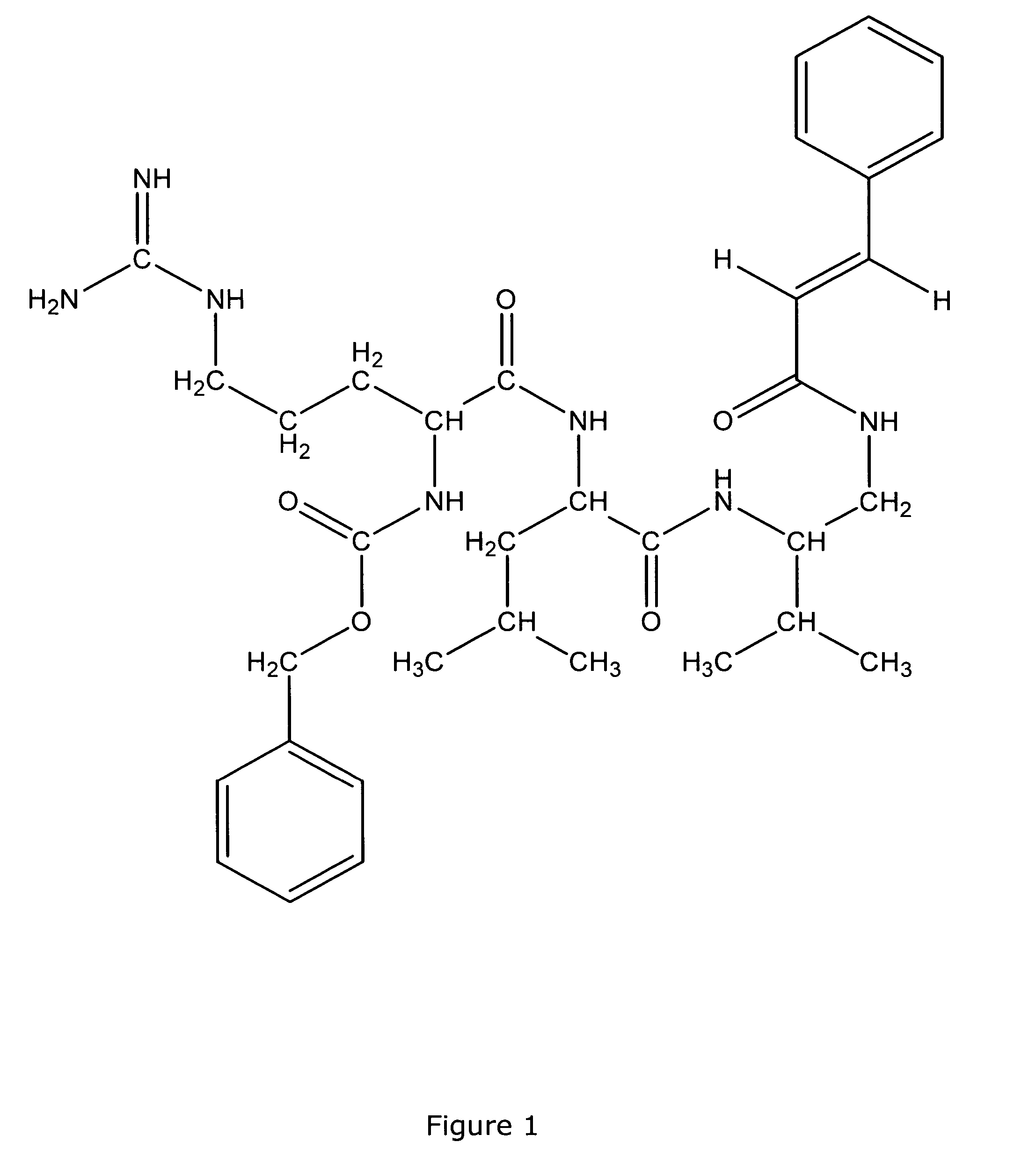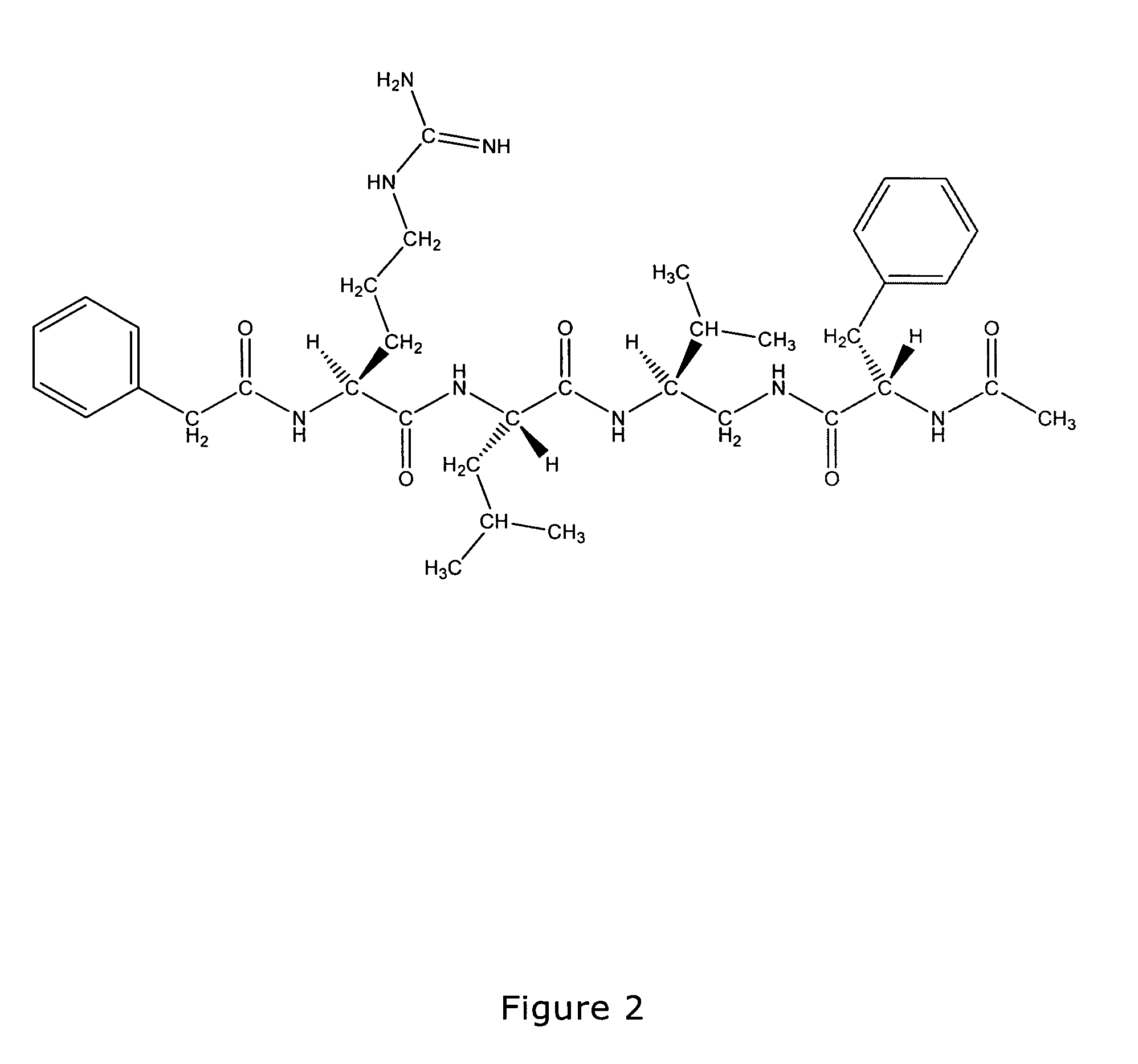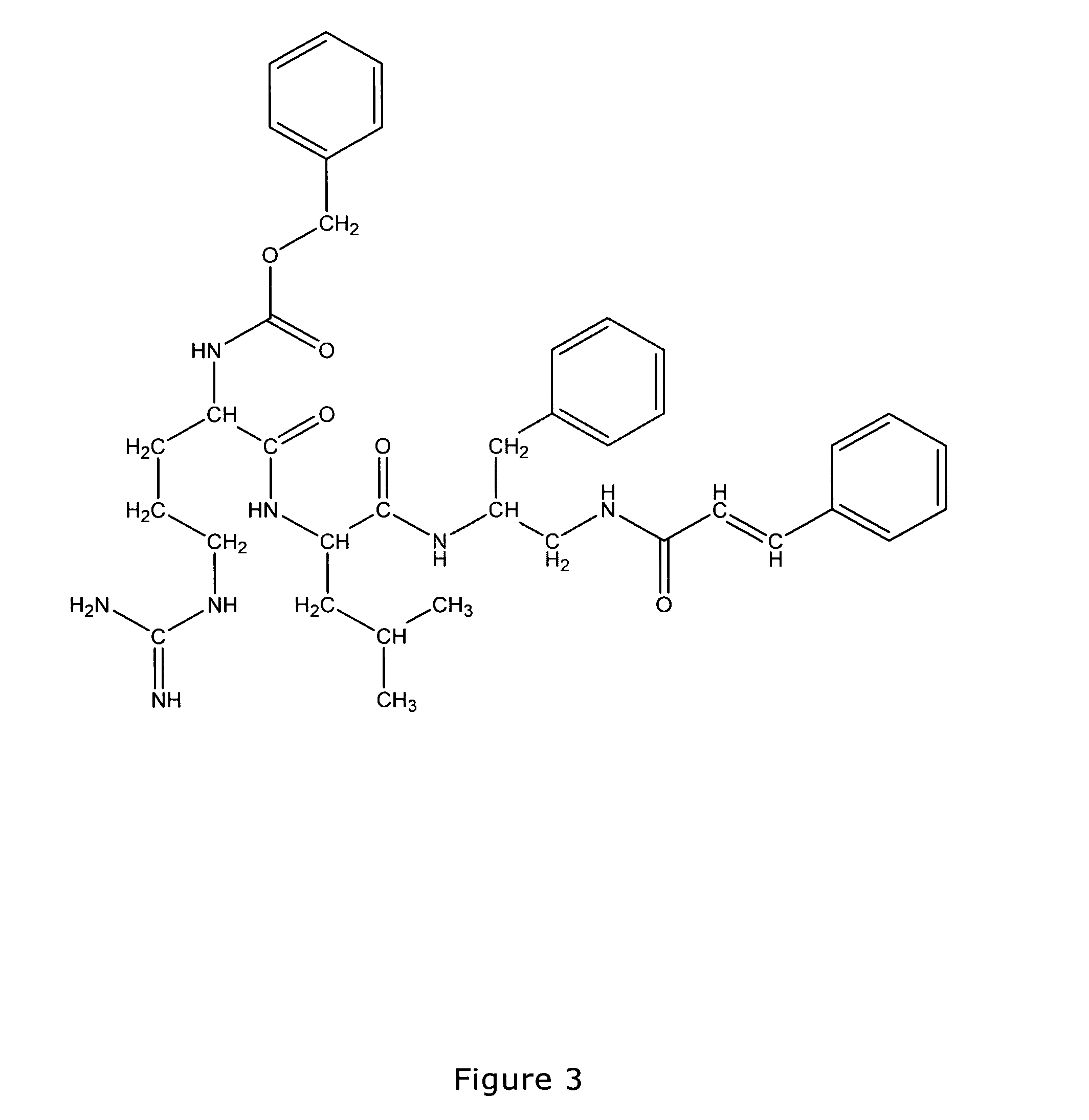Antimicrobial compounds
a technology of antimicrobial compounds and compounds, applied in the field of antimicrobial compounds, can solve the problems of drug resistance, drug resistant pathogens are a major burden for health-care systems, none of these substances have been developed into clinical use, etc., and achieve the effect of reducing and/or eliminating more than one microorganism
- Summary
- Abstract
- Description
- Claims
- Application Information
AI Technical Summary
Benefits of technology
Problems solved by technology
Method used
Image
Examples
example 1
Synthesis of the Different Compounds (General Scheme see FIG. 11)
Procedure A—Coupling.
[0078]10 mmol of the amine component (hydrochloride) was dissolved in 50 ml of dimethylformamide (DMF). Next, 1.4 ml (10 mmol) of triethylamine, 12 mmol of carboxy-component and 18 mmol of 1-hydroxybenzotraizole (HOBt) was added. The mixture was cooled on ice bath and 12 mmol of dicyclohexylcarcodiimide (DCC) was added in small portions during 30 min., with vigorous stirring. The reaction mixture was stirred on ice bath 1 hour, and then left at room temperature overnight. The precipitated dicycolhexylurea (DCU) was filtered off and washed with DMF, and the combined filtrates were evaporated to dryness under reduced pressure. The solid residue was dissolved in ethyl acetate, and the resulting solution was washed with water (1×100 ml), ice-cold 1N HCl (3×50 ml), water (1×φml) saturated NaHCO3 (3×50 ml) and finally with water (3×70 ml). The organic layer was dried over anhydrous MgSO4. The drying agen...
example 2
Synthesis of Cp1 (Cystapep 1)
[0089]The (2S)-1-amino-2-tert-butyloxycarbonylamino-3-methylbutane hydrochloride was obtained from tert-butyloxycarbonyl-L-valine in accordance with the literature procedures [1, 2]. m.p. 175-176° C.; [α]D22=+5| (c=1, ethanol).
[0090]Elemental analysis: calculated: 50.31% C, 9.71% H, 11.73% N; found: 49.65% C, 9.74% H, 11.76% N; IR (KBr): 3375 (NH, urethane), 2876 (NH3+, amine) 1683, (C═O urethane), 1165 (C—O, urethane) [cm−1]
Synthesis of (2S)-2-Tert-Butyloxycarbonylamino-1-Trans-Cinnamoylamino-3-Methylbutane.
[0091]The solution of (2S)-1-amino-2-tert-bytyloxycarbonylamino-3-methylbutane hydrochloride (2.38 g 10 mmol), triethylamine (1.7 ml, 12 mmol), HOBt(2.70 g. 20 mmol) and trans-cinnamic acid (1.77 g, 12 mmol) in 50 ml of tetrahydrofurane (THF) was cooled in an ice bath, and DCC (1.54 g, 7.5 mmol) was added in small portions, during 30 min. The stirring was continued for 1 hour, and next the reaction mixture was left in room temperature overnight. The ...
example 3
[0099]Antibacterial Analysis
[0100]Clinical isolates and reference strains including Streptococcus pyrogenes type M1, Streptococcus agalactiae (NCTC 8181), Streptococcus equisimilis (ATCC 12388), Streptococcus pneumoniae (ATCC49619), Staphylococcus aureus (ATCC 29213), Staphylococcus epidermidis (ATCC 14990) were tested. The clinical isolates were isolated by the University Hospital, Lund, Sweden and included a variable numbers of S.aureus including MRSA, CNS, groups A, B, C and G streptococci (GAS; GBS; GCS; GGS, respectively), Staphylococcus aureus, coagulase negative staphylococci (CNS), Enterococcus faecium, viridans streptococci, Streptococcus pneumoniae, Listeria monocytogenes, Moraxella catarrhalis, Haemophilis influenaae, E. coli, Klebsiella pneumoniae and Pseudomonas aeruginosa.
[0101]The antibacterial activity of the different compounds was tested by agar well diffusion. Strains were grown aerobically at 37° C. for 18 hours on blood agar base (LabM) with 4% defibrinated hor...
PUM
| Property | Measurement | Unit |
|---|---|---|
| flow rate | aaaaa | aaaaa |
| Flow rate | aaaaa | aaaaa |
| optical density | aaaaa | aaaaa |
Abstract
Description
Claims
Application Information
 Login to View More
Login to View More - R&D
- Intellectual Property
- Life Sciences
- Materials
- Tech Scout
- Unparalleled Data Quality
- Higher Quality Content
- 60% Fewer Hallucinations
Browse by: Latest US Patents, China's latest patents, Technical Efficacy Thesaurus, Application Domain, Technology Topic, Popular Technical Reports.
© 2025 PatSnap. All rights reserved.Legal|Privacy policy|Modern Slavery Act Transparency Statement|Sitemap|About US| Contact US: help@patsnap.com



